Add a world of colour to your spring and summer garden by planting gladiolas. With a little bit of care and winterization, glads can make it through cool season winters to give you a burst of colour when the world melts away and turns green again. Oh, and there are some varieties that are winter hardy and can be left in the soil! This gladiolus guide covers everything you need to know about when and how to plant, as well as caring for your flowers once they have sprouted.
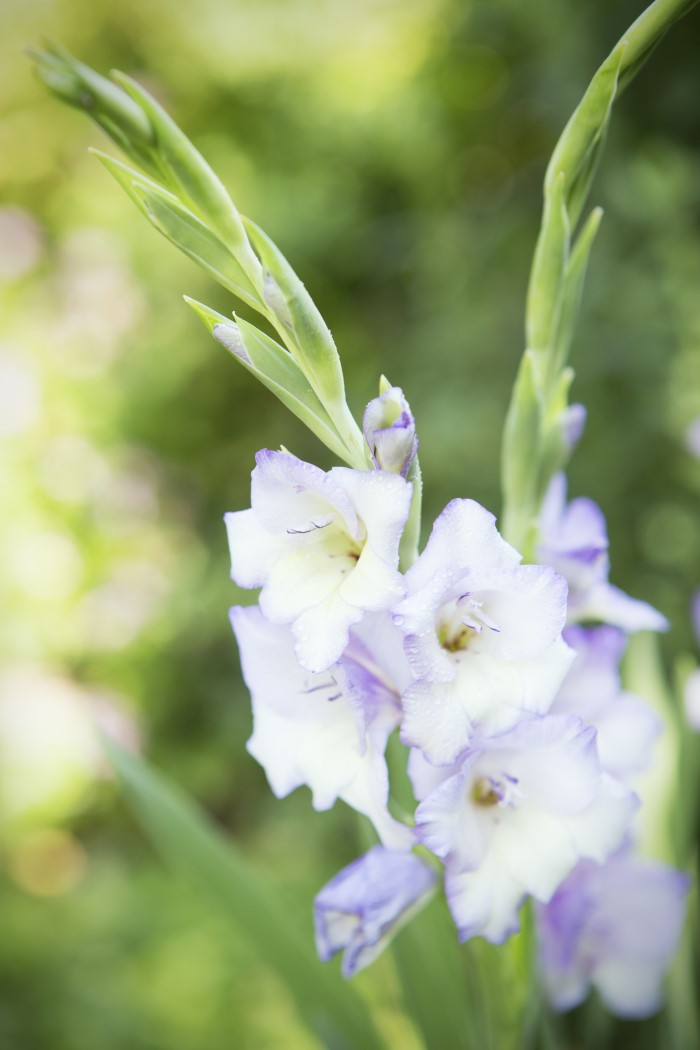
When choosing glad bulbs for your garden, note that “gladiola” generally refers to (Gladiolus x hortulanus), but there are some that are more cold hardy (such as Gladiolus nanus), which is a treat for those of us who would prefer to plant them in the fall and not have to dig them up and store them for the winter.
Typically, gladiolus bulbs are planted in the spring for summer blooming cut flowers or to decorate the back border. They are only hardy to Zones 7-10. If you are in a cooler zone, then look for hardy glads which have fewer varieties that are planted in the fall and can tolerate the cold in Zones 5-7. The best way to find these hardy gladiolas is to read the description and match them to your zone.
Partnership disclosure: I’m sending out a HUGE THANK YOU to Flowerbulbs.com for providing the beautiful images for this post. Flowerbulbs.com is not a retailer, instead they support bulb growers. The website is an amazing resource for growing and learning about all kinds of flower bulbs that helps to gardeners. I have worked with them many times because of the great work they do to promote the joy that comes from growing bulbs for beauty and cut flowers.
GIVEAWAY! And we want you to grow some glads in your garden so we’ve have partnered to give away some hardy gladiolus flowers this fall. Check out how to enter the draw at the end of this post.
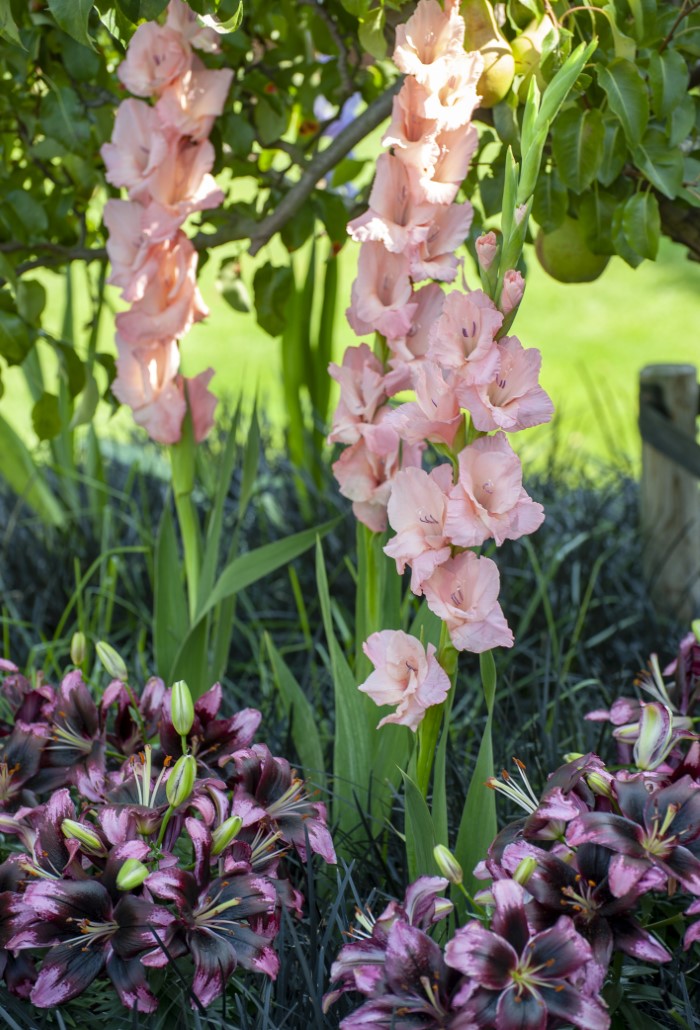
Meet the Glads! (Gladiolus Flowers)
If you want a really showy bloom, the gladiolas won’t disappoint. Originally from South Africa, gladiolus has become one of the four most popular summer bulbs. A favourite cutting flower for many gardeners and florists alike, you will find differing varieties of gladiolus in a vast rainbow of many colours. From pretty pastels to deep jewel tones, there are gladiolas for everyone out there.
While popular as a border flower, people also grow them at the back of vegetable gardens or in ornamental gardens with the intention of cutting them. Their beauty is hard to ignore, and they have been cultivated since 1841. Because they’re easy to hybridize, new plants appear every year and it is estimated that there are now close to 300 species.
The gladiolus flower meaning comes from the Latin word gladius which means sword. Possibly because of their blade-like leaves. Sword lily is another common name, though I’ve always called them gladiolas. The flower represents strength, pride, and victory.
How Big are Gladiolus Blooms?
Gladioli bloom from the bottom up, with the flowers lasting a long time, up to two weeks upon the first blooms. The flowers grow on tall stalks, with the plant reaching anywhere from 2-5 feet high.
The flowers can also range in size, with “miniature” blooms being 3 inches across and “giant” ones being 5 inches across.
With these huge blooms and tall stalks, you can imagine that they can often require some staking. That’s generally the biggest complaint about them. But, it’s an easy fix and worth the effort.
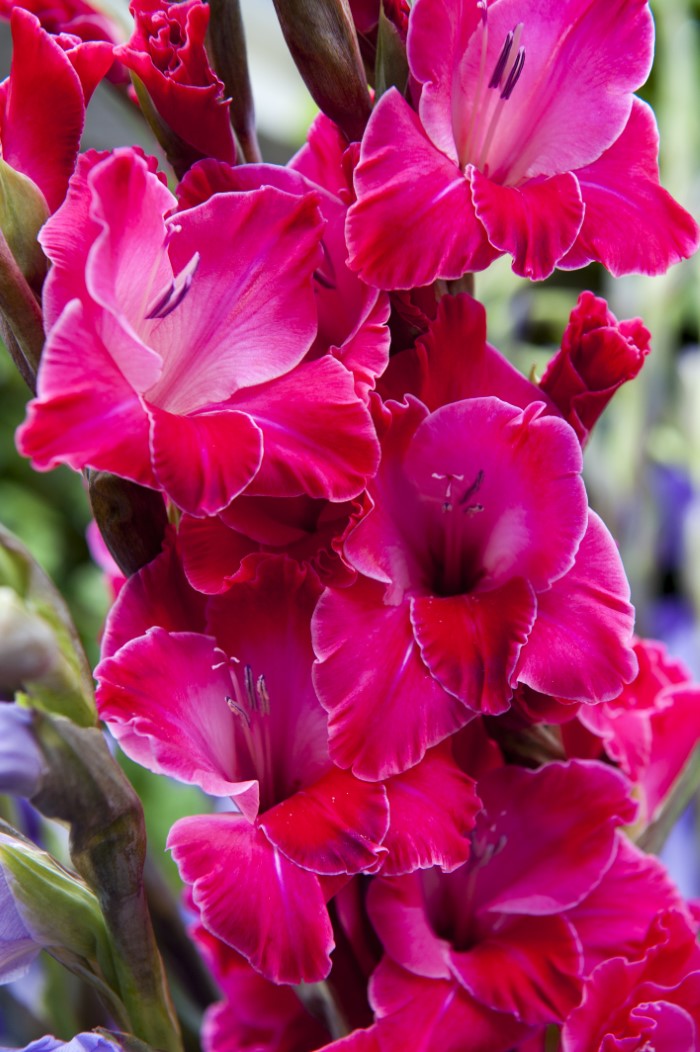
When Do Gladiolas Bloom?
Gladiolus blooms between spring and summer, which I suppose it makes sense that they are the August birth flower. Most often, you can find them in late May all the way to September, but it also depends on when you plant them.
For the hardy gladiolas that you plant in the fall, they will begin to show up in late May through to early June. Often, they will have a secondary spike of flowers (yay!).
For tender glads, they will bloom anywhere from 70-100 days after planting. You can begin to plant them after the last expected frost up until mid-July.
This means you can have blooms well into late summer. You can stagger plantings until mid-July to have continual bursts of colour throughout the season.
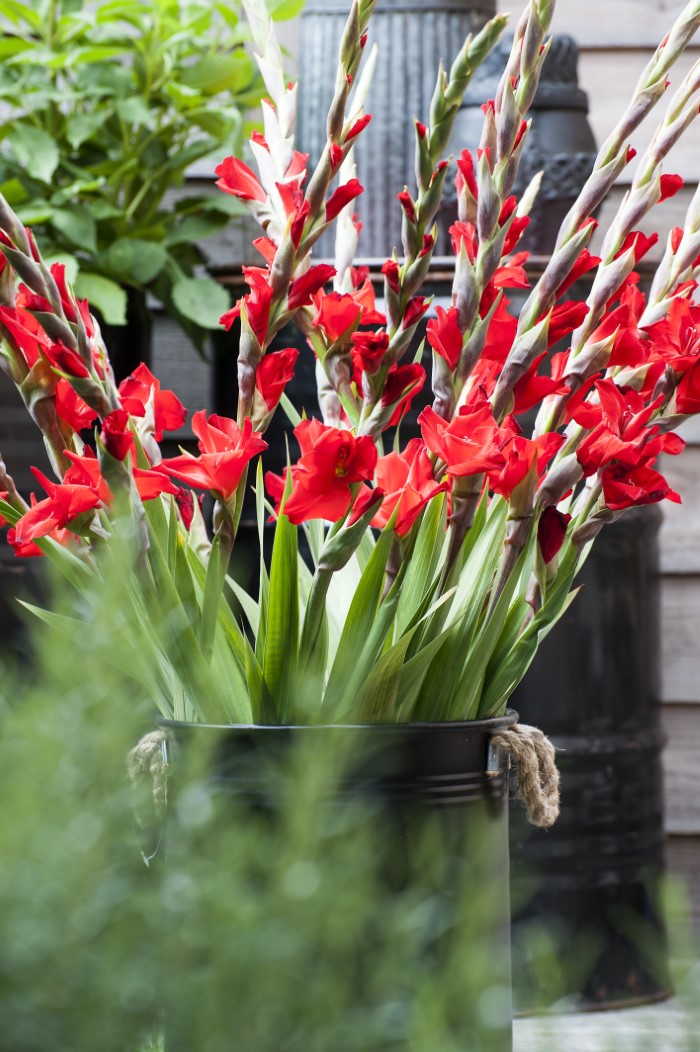
Are Gladiolas Hardy?
Yes and no, depending on where you live. As mentioned above, there are two kinds of gladioli: hardy glads and gladiolas. Here’s how the two are different.
Growing Tender Gladiolus
Traditionally, gladiolas are winter hardy in zones 7-11. This means that anyone in zones 6 and below will want to dig them up in the fall before winter comes. I’m in Zone 7b-ish and I have rarely had my glads come back in previous years to their full glory. I would definitely err on the side of caution when trying to overwinter the less hardy varieties in the soil. They need to be protected from frost in order to return year after year. You will want to do this for most tender perennials or risk losing your corms.
For those who don’t want to risk it, you can dig up the corms 4-6 weeks after you have picked the flowers, or they have finished blooming. Dig them up and shake off as much dirt as you can. Trim the leaves and stalks within an inch of the corm. Let them dry for a week and then brush off any remaining soil.
Store the corms in a dark and cool place in a breathable bag such as mesh or even pantyhose. This helps to prevent mildew from growing and the mice from munching.
Certain tender gladiolus species you will almost certainly want to dig up for the winter. This includes Abyssinian gladiolus and Gladiolus pole-evansii, as they can only grow in zones 8 or above.
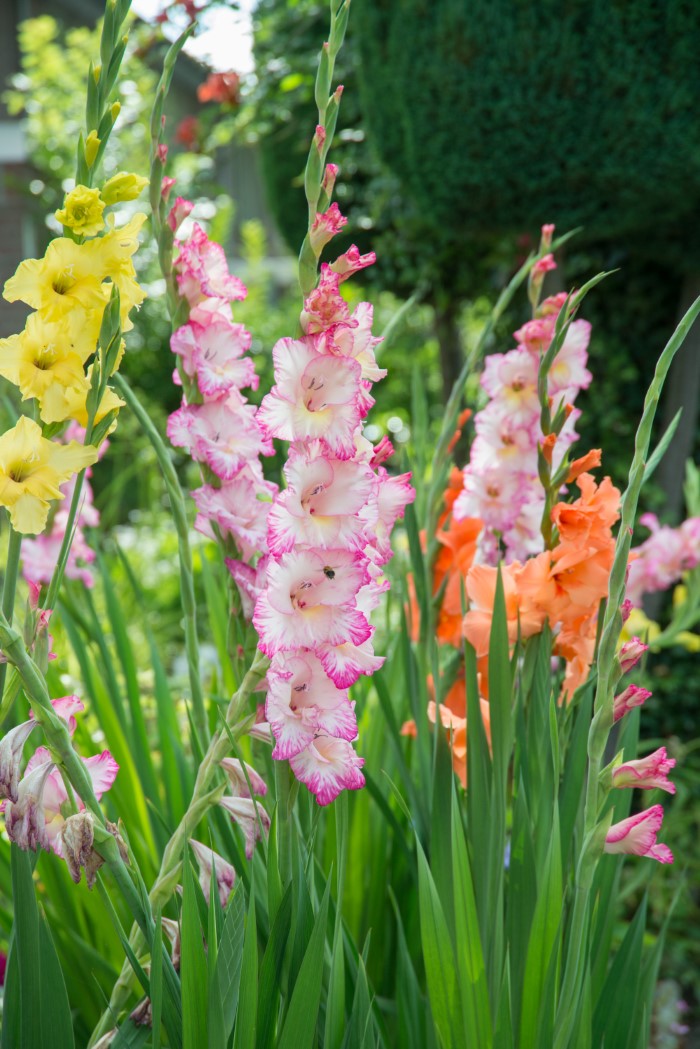
Growing Hardy Gladiolus
With some good luck and a little bit of work, you can keep your gladiolus in the ground year-round in zones 6-7, and maybe even as low as zones 3 with protection. This means you can plant the bulbs in the fall to have them bloom in late spring and not have to worry about taking them out for next year. You can leave them right in the ground!
Certain varieties of gladiolus are hardier than others, most notably dwarf gladioli Gladiolus nanus. Other species that originated in Europe and Asia rather than those from South Africa are also good for cold winters. This includes Byzantine gladiolus and Turkish marsh gladiolus Gladiolus imbricatus. They need to be treated as hardy bulbs, planting them in the fall rather than the spring. They require the cold period in order to bloom.
Some say if there isn’t a hard freeze in your area (28°F or lower), you can plant your bulbs in the fall and leave them over winter. We all know winters are getting warmer in some areas. Less severe freezing that also doesn’t last as long means plants are now growing in places they didn’t before.
When gladiolas come back as perennials, they will eventually spread by themselves and expand with the right conditions. You can also lift and divide the gladiolus corms yourself to help multiply your stash in your garden or to give away to friends and family.
To give your hardy gladiolus the best chance at surviving the winter, make sure to plant them in full sun and well-draining soil. They will also need to be planted deeper than normal to help keep them warm.
Snow itself acts as a great insulator as it holds lots of air. It helps to keep soil from freezing, and therefore the corms in the soil from freezing. A thick layer of mulch on top also keeps them insulated.
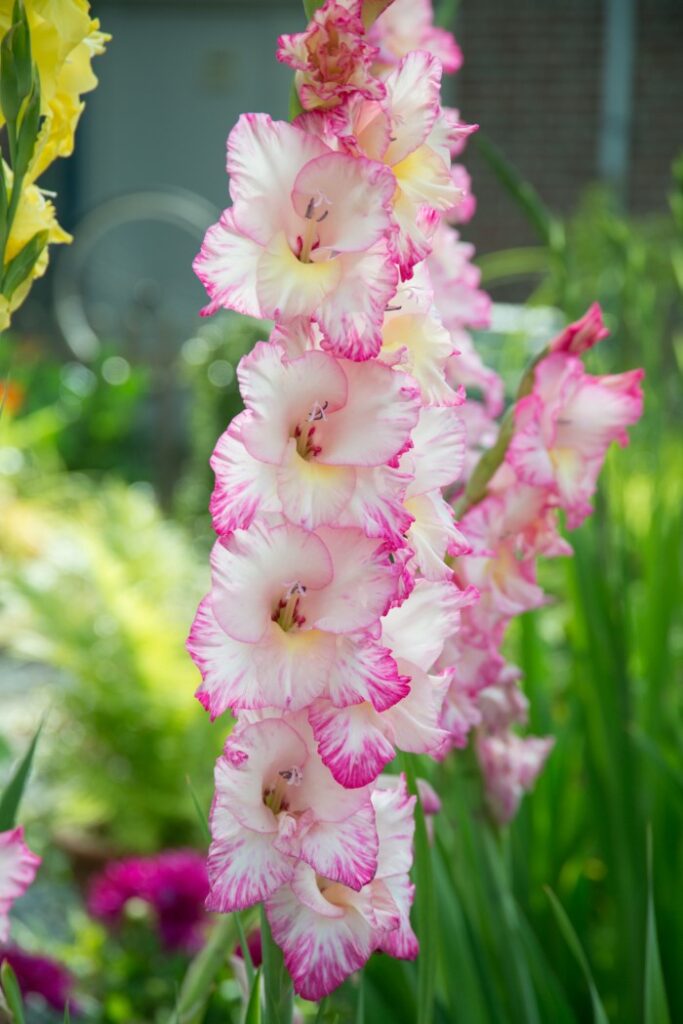
How to Plant Gladiolus
Technically speaking, a gladiolus bulb is a corm. While similar to bulbs, they just don’t have the layered scales that you would find in a bulb.
Soil
Gladiolus corms will require well-drained soil in order to prevent them from rotting. In fact, they do rather well in sandy soil. Since the soil is lighter and holds more air, it helps to drain the water and prevent any kind of rot.
The air also acts as a better insulator for the corms during the winter. Air will also make the soil lighter, so the bulbs can grow easier. This allows the corms to expand, making the bulbs bigger and healthier.
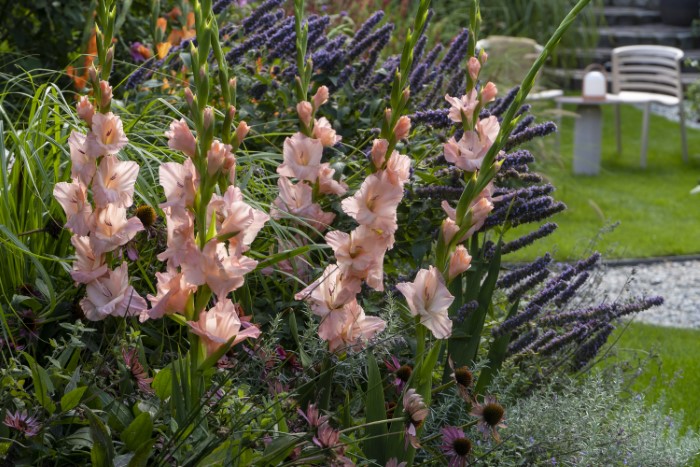
Light
Another thing to consider in regards to location is how much sun your corms will get.
Like most bulbs, gladiolus flowers prefer full sun, but will also tolerate partial shade. Ideally, they want to get between 5-6 hours of sun a day but note that with limited sun the stalks can flop over and will require staking. Sunny sites also won’t freeze as badly in the winter, so your gladiolus has a better chance of making it through the winter.
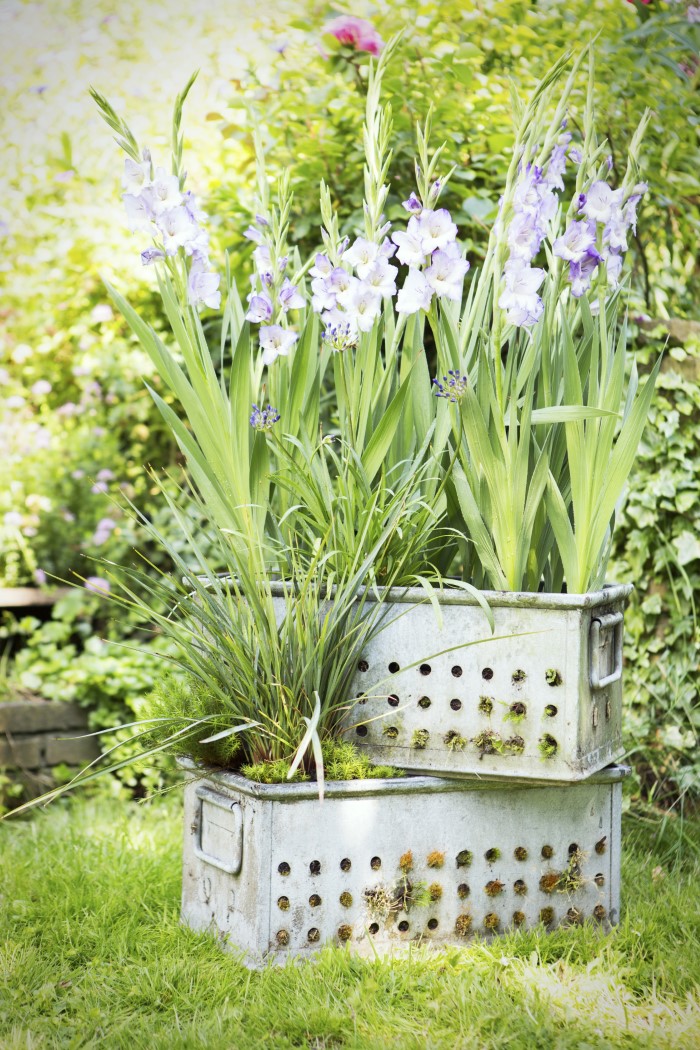
Planting
Before you plant, you will want to add in some organic compost before planting. Mix it in well with the soil. If using fertilizer, be careful not to burn the corms. Add in a layer of unfertilized soil before placing the corm.
Deep planting helps gladiolas with the cold. The deeper in the soil they are, the harder it is for the frost and cold to get to them. However, you don’t want to plant too deep as they will never rise out of the soil. Aim to plant gladiolas 6 inches deep, not going below 8 inches or above 4 inches. Space out corms half a foot apart.
Planting gladiolas deeper than the average bulb also helps to keep them grounded. Since they have such tall stalks and leaves, this will help protect them from toppling over in the strong wind.
You may also want to consider planting corms by a fence or next to a house where they will be sheltered from the wind.
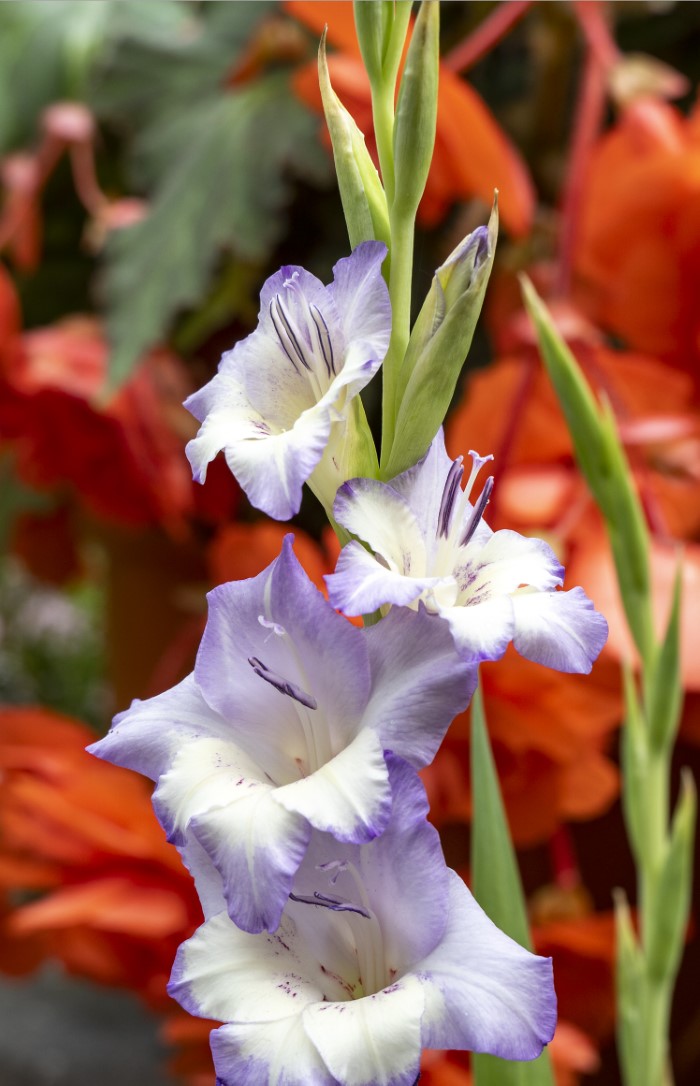
How to Care for Gladiolus Flowers
Mulch
If you plant your gladiolas flowers in the fall (or want to overwinter your current bulbs) you will want to apply a thick layer of mulch over the top of the soil to help keep it warm. The mulch helps to capture and hold air.
Mulch can consist of natural elements such as branches, pinecones, shredded bark, and shredded leaves. Leaving the autumn leaves from trees instead of bagging them up works as a great natural mulch! Ideally, you just want to protect the gladiolus corms from severe frost as much as possible.
In the spring, keep an eye out for sprouts. You want to keep them well-watered once they sprout, so if there isn’t much rain, get out there with your garden hose.
Stake
If you get lots of wind, you will want to stake your gladiolas.
Due to their height and top-heavy blooms, glads have a tendency to flop over. They need plenty of full sun, strong roots, regular watering, and wind protection to grow upright. Any stress and you will see them start to flop over. Light is usually one of the main culprits. Yes, they are complete and total drama queens!
Staking gladiolas is easier when you group them together. You can place them against a fence, trellis, or other garden art for support. Use a fishing line or jute to tie them to the support. Ideally, you want to attach them in the middle of the flower buds.
You can also stake gladiolas individually with garden stakes. They often are made of wood, bamboo, or rebar. You can also use metal flower supports that are curved to support flower stems.
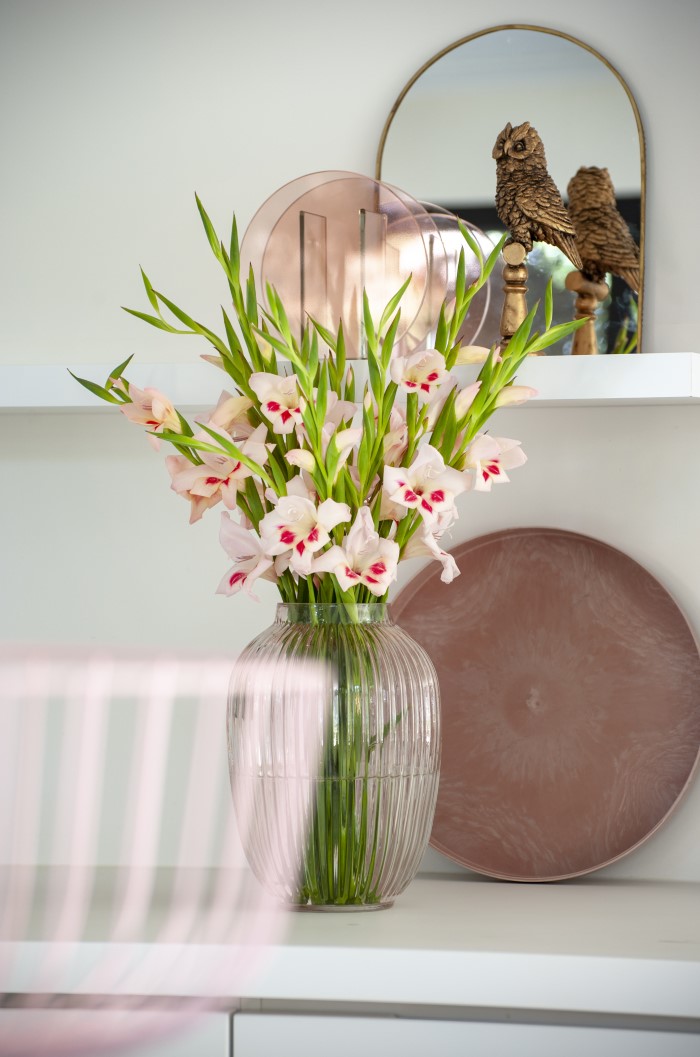
Cutting Gladiolus Flowers for Arrangements
Glads are hands down one of my favourite cutting flowers. The sheer height of the blooms in a vase makes them a stand-out arrangement all on their own. If you are growing some in your yard this year, why not use some as cutting flowers?
You will want to harvest a stalk when there are 2-3 blooms already open. The other buds will continue to open up in the vase. When snipping, leave lots of leaves on the plant so that the corm can be used again next year. The leaves gather nutrients for the bulb to grow next season’s flowers.
When cutting, you want to make sure everything is very clean. This means clean pruners, clean buckets, and clean water. Cut your stalk at an angle and immediately place the blooms in a bucket of water. I like to cut my flowers in the morning while they are well hydrated and free from heat stress.
To help encourage the closed buds to open up, you can also cut off 2-3 inches of the stalk at the top. Change out the vase water frequently and they should last anywhere from 6-12 days.
By then, you will have completed a full gladiolus flower cycle! If there’s anything I missed that you have questions about, feel free to leave them in the comments down below.
Giveaway!
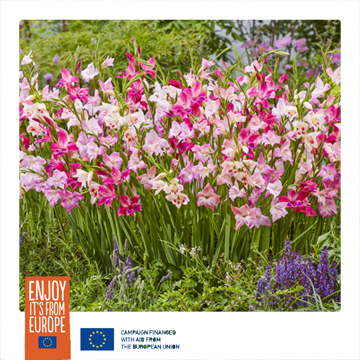
I’m partnering with flowerbulbs.com to give away a collection of gladiola bulbs to a lucky Garden Therapy reader. This Cherry Blossom Hardy Gladiolus Mixture is sure to brighten up your garden. With these bulbs, you can leave them in the ground come winter and enjoy their spectacular pink hues year after year. So easy and effortless!
This giveaway is now closed. Congratulations to the winner, Gerald!
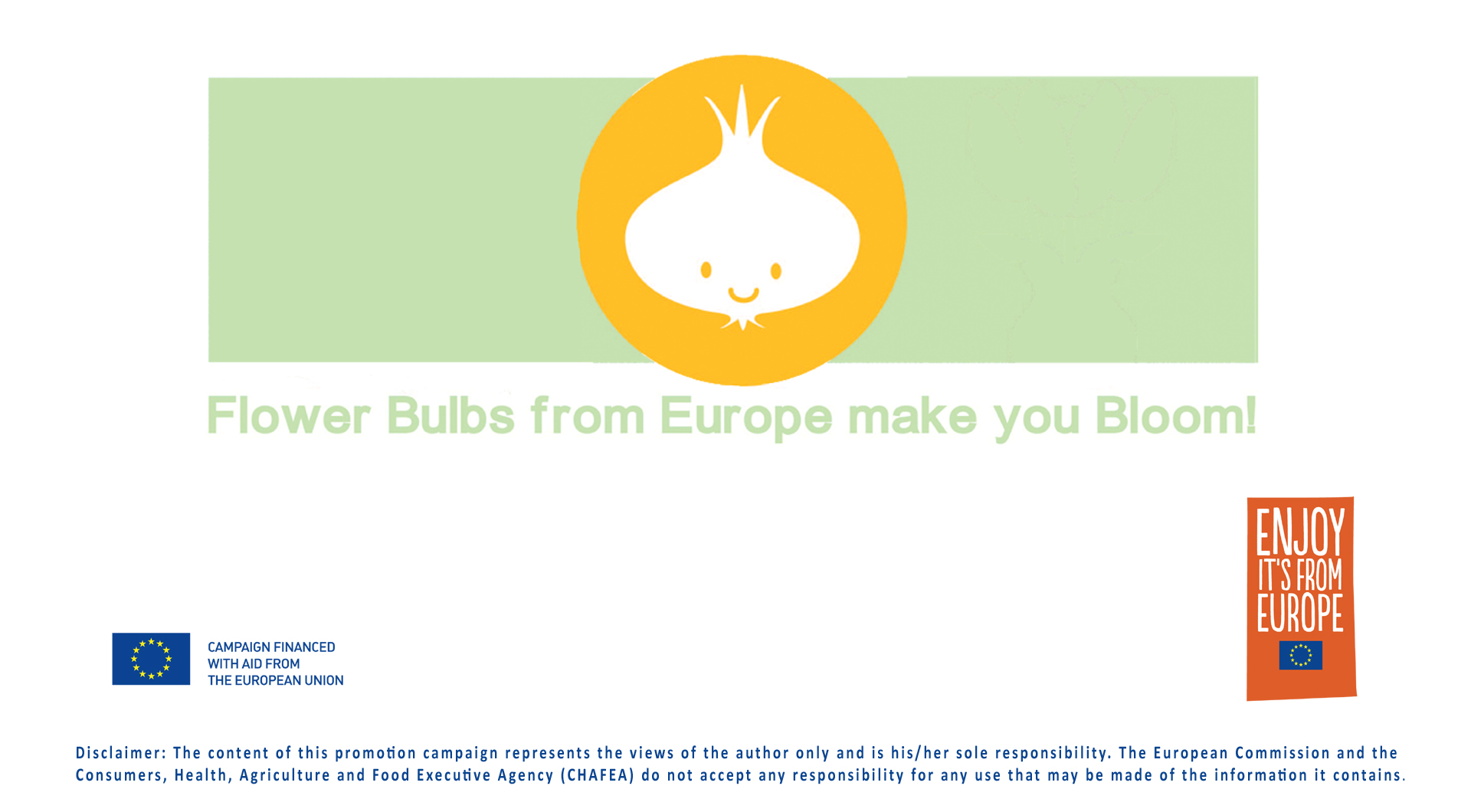




I love glads! They are so BEAUTIFUL and love all the different varieties! So easy to grow!
They’re such beautiful flowers. Would love to win!
Our favorite Glads are the ones from my father-in-last who passed away last year. All of his children and siblings received some of them and it is awesome to know we all get to still see a part of his garden. Thank you for the information about how we can best care for them!
Why do my gladiolus have shredded tops on their leaves?
How do we order bulbs?